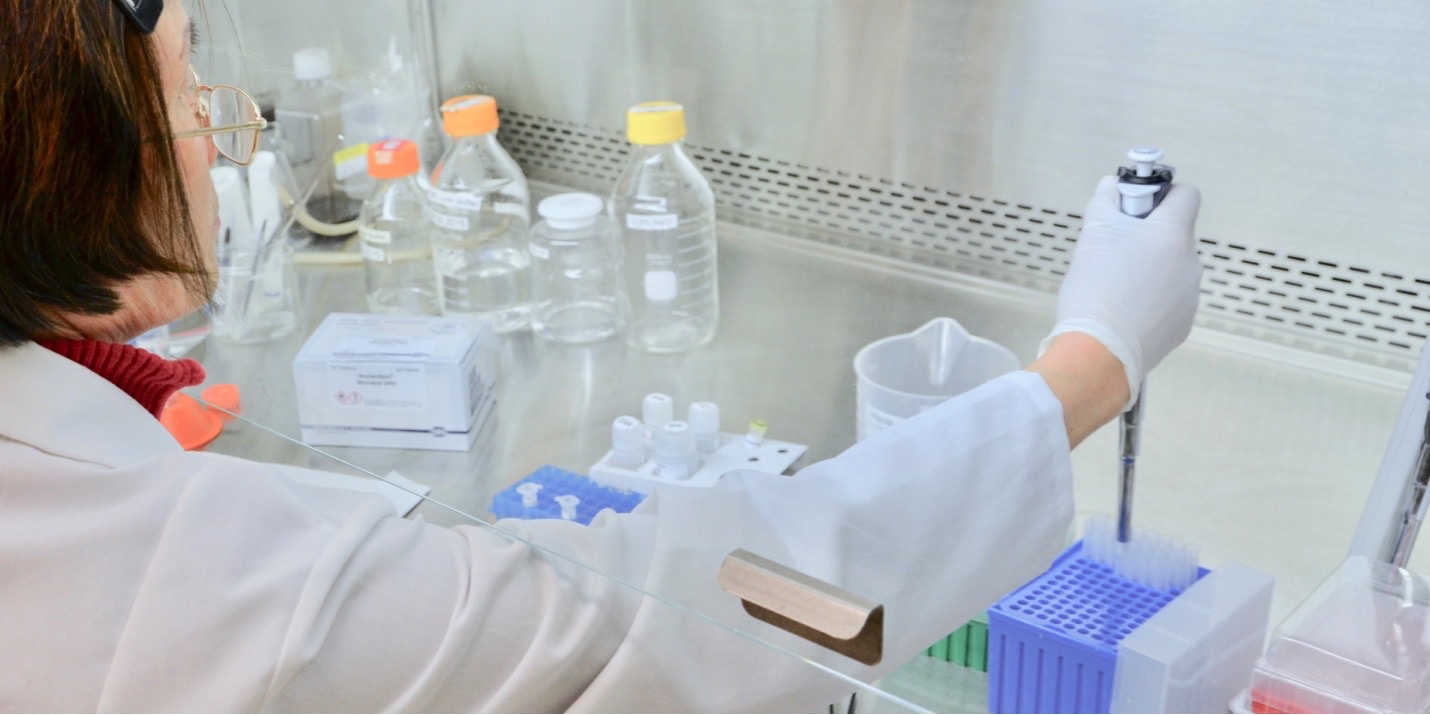UMGC Extraction Services can boost research

Deep in the basement of Nils-Hasselmo Hall is a dedicated BSL2 extraction lab for the University of Minnesota Genomics Center (UMGC) that is equipped with a variety of automated instruments for standardization of high-throughput nucleic acid extractions for UMN researchers. Last year the UMGC’s four-person extraction team (with 30 years of combined extraction experience) isolated DNA or RNA from over 45,000 samples – a record number that ranged from plant leaf tissue to human blood, and many challenging samples in between.
Darrell Johnson, service manager for both extraction and gene expression services at the UMGC, said having the core isolate DNA or RNA is an opportunity for both UMN researchers and external partners who have limited lab space or staffing resources to continue moving forward with their project after sample collection – making the core’s extraction services a valuable resource for investigators.
“Whether it’s 1-2 samples needing intact, high molecular weight genomic DNA for downstream PacBio applications or over a thousand plant leaf samples slated for our Genotyping-by-sequencing service, we are able to accommodate many project sizes due to our scalable extraction workflows,” he said.
Working with Different Tissue Types
With each tissue type having unique characteristics and challenges, the key to high-quality DNA and RNA extractions with sufficient concentration is selecting the optimal tissue disruption and extraction workflow for that sample type. The UMGC offers a wide variety of commercially available kits, including column-based methods, and the core has developed and validated an economical CTAB-based method that works on notoriously difficult-to-extract plant samples – starting at $8/sample.
“Plant extractions can be particularly challenging due to interfering contaminants like polyphenols and co-precipitating polysaccharides,” Johnson said. “The core’s homebrew method mitigates these inhibitors, which can be problematic for DNA analysis by PCR and for our NGS services, so our goal is to provide efficient workflows that produce contaminant-free, high-quality DNA for our clients.”
In 2016, the core’s Innovation Lab led by Daryl Gohl, Ph.D., published a Microbiome method that improves the quantification and accuracy of microbial communities, and since then, the extraction team has steadily seen increases in requests for bacterial DNA extraction from stool, soil, and other environmental samples. Key to an unbiased Microbiome experiment is ensuring the extraction method will represent the microbial community from the collected sample, and the extraction team utilizes the Qiagen PowerSoil series of kits due to its ability to isolate representative DNA and its automation capabilities making it a cost-effective option for microbiome researchers.
In addition, the extraction team continuously develops new protocols and welcomes new - even problematic - tissue types, like fungal or sensitive materials. “Our custom extraction service sees the most challenging projects and is reserved for researchers wanting to explore a new method or for a tissue type we haven’t tested before,” said Johnson. “Typically, we will start with a pilot to test a few samples against a variety of methods to find a customized protocol that meets the QC requirements for the downstream application.” But for some new tissue types, the extraction team can accurately pinpoint the best extraction solution early due to their years of experience – saving crucial time on method testing.
End-to-End Services
As the UMGC continues to acquire state-of-the-art technologies and to expand on their end-to-end services – projects starting with extraction and ending with informatics – the need for an efficient, high-throughput extraction service will also continue to grow.
“Extractions partner with nearly every service at our core,” said Dinesha Walek, operations manager for high-throughput services. “In order to move samples seamlessly from one service to the next within our core, we work closely with the NGS library prep team, genotyping services, microbiome, etc., to make sure extracted samples meet QC requirements for each service.”
Learn about the full sweep of extraction options and pricing at the UMGC or contact Darrell Johnson for expert consultation on nucleic acid extraction.
